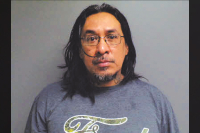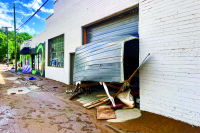First things first: How many cars too many?
The Jackson County transportation task force has spent the past several months signing off on a projected traffic count for the future, namely the year 2035. Until road planners had a projection in front of them, they didn’t know what kind of overage they were dealing with, and whether the problem was a small one or big one.
“One of the driving forces behind any road in the future is the traffic projection for 2035, which is our horizon year right now,” said Ryan White, DOT project coordinator in Raleigh. “If we add no signals, no connecting roads, no bypass, in 2035, how is N.C. 107 going to operate? We have to establish there is truly a problem and that will show there is some type of improvement that is needed.”
White is coordinating the planning process for the Southern Loop, which is on a parallel track to the task force. While the task force brainstorms its solutions, the DOT is engaged in the planning process for the Southern Loop. If and when the Southern Loop is chosen as the best solution, the DOT will have a head start on the otherwise lengthy process of building a major new road.
The congestion projected for 2035 turns out to be only mediocre rather than terrible, according to Ryan Sherby, community transportation coordinator for 10 western counties.
Traffic models pinpointed the main drag of N.C. 107 from Lowe’s to the intersection has more cars than it can handle — about 1,000 to 2,000 too many during peak commuter times. The intersection of N.C. 107 and U.S. 23-74 was flagged as a problem area of its own.
“It pretty much showed what we all expected,” Sherby said.
But there are other areas in the county that will be experiencing traffic congestion by 2035 as well, including part of Main Street and Centennial Drive on the WCU campus.
Southern Loop planning has stalled somewhat in a quest for the best traffic projections. The numbers massaged by the task force were considered more up-to-date than the ones the DOT was using, so they are redoing their models accordingly. When done, White will know not only the volume of cars, but theoretically how they are moving along the road.
“We can see how cars are driving and turning,” White said.









